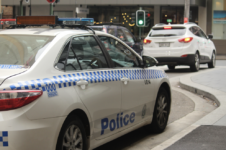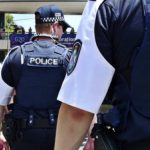Corruption Pervades Police Forces in Australia and the United Kingdom: Part 1

It has been said that ‘absolute power corrupts absolutely’, and perhaps the organisations which best establish the truth of this maxim are police forces and services, wherever they may be.
This article seeks to set out how the corrupt activities of police officers across Australian jurisdictions are remarkably similar in nature to one another, as well as to those in the legal system from which ours is derived.
Wood Royal Commission – New South Wales
Justice James Roland Wood headed the Royal Commission into the New South Wales Police Service, which produced 6 volumes of findings, which led to vitally needed reforms, including the establishment of a state oversight body, further decriminalising sex work and reforming some drug laws.
The Royal Commission spanned from 1995 to 1997 and, suffice to say, it was a much-needed inquiry, seeking to rid the NSW Police Service (as it then was) of a significant number of corrupt police of lower and senior ranks.
The method of operation was highly intellectual, by virtue of the commissioner co-opting a senior member of the crooked police and subsequently declaring an amnesty from prosecution, thereby gathering information which otherwise would not have come out through court proceedings.
As a result, hundreds of corrupt police resigned or were dismissed, leaving the commission with a substantial amount of information, which would serve to ensure reforms would eradicate or at least reduce similar corruption in the future.
One commissioner remains while another goes
When the NSW Royal Commissioner released an interim report, another commissioner, this time NSW police commissioner, Tony Lauer felt compelled to resign.
United Kingdom’s Peter Ryan was brought in as police commissioner to address the recommendations of the Royal Commission, with the NSW government doing its bit by consolidating many recommendations in statute and the formation of the police integrity commission (PIC).
This subsequently became the law enforcement conduct commission (LECC) in 2017.
Commissioner Ryan was formerly the National Director of Training of British police.
Fitzgerald Inquiry – Queensland
This inquiry commenced in 1987 into corruption by the Queensland police and government ministers, essentially, with three members of parliament imprisoned and the police commissioner, Sir Terry Lewis, also jailed losing his knighthood in the process.
It was expected to last 6 weeks, however it went on for 2 years and was headed by Tony Fitzgerald QC.
The commission tabled in excess of 100 recommendations in the Queensland parliament, including the establishment of the electoral and administrative review commission, the criminal justice commission and reform in relation to the police force.
Royal commission into the management of police informants -Victoria
This involved Lawyer X, a barrister by the name of Nicola Gobbo from a prestigious family of lawyers, who whilst acting for clients also informed on them. Her uncle, Sir James Gobbo was a former supreme court judge and governor of Victoria.
It commenced in December 2018, with a final report delivered to state parliament in November 2020, but it’s not finished yet.
Whilst it also heard evidence of police corruption, the results of a special investigator, the honourable Geoffrey Nettle, AC QC is yet to make findings on a significant number of matters.
It is reported that the office of the special investigator (OSI) is experiencing difficulty in being supplied with requested material by Victoria police, so it is anyone’s guess when this matter will be resolved, in relation to corrupt police in particular.
Justice Nettle has said he has spent the past year locked in legal dispute with law enforcement agencies over access to information.
Kennedy Royal Commission – Western Australia
This was a strange one, which was into whether there has been corrupt or criminal conduct by any Western Australian police officer?
It started in 2002 and was completed in 2004.
The commissioner said this:
“The full range of corrupt or criminal conduct from stealing to assaults, perjury, drug dealing and the improper disclosure of confidential information have been examined. [the Western Australian police force] has been ineffective in monitoring those events and modifying its procedures to deal with that conduct and to prevent its repetition.”
The fact that there remain in the Western Australia Police Service (WAPS) a number of officers who participated in this conduct and who not only refused to admit it, but uniformly denied it with vehemence, is a matter of concern.
A principal recommendation was that a corruption and crime commission be established as an oversight body in a system where the commissioner of police should retain the primary responsibility for managing the discipline of the police service.
Independent Commission Against Corruption (ICAC) – South Australia
ICAC was established by the government of South Australia in 2013 and in a joint investigation with South Australian police, into an operation called mantle, charged 7 South Australian police officers with theft and abuse of public office, with none of them convicted. The arrests which were in 2014, led to two secret trials costing millions of dollars.
In 2018, premier Steven Marshall stated that his government will introduce reform legislation to hold some of the hearings in open court. Perhaps the trials should be heard in open court also.
Australian states standing independent commissions against corruption are:
- NSW has an independent commission against corruption (ICAC)
- Queensland has a crime and corruption commission (CCC)
- Western Australia has a corruption and crime commission (CCC)
- Victoria has a broad-based anti-corruption commission (IBAC)
- South Australia has an independent commission against corruption (ICAC)
- Tasmania has an integrity commission (IC)
- Northern Territory has an independent commissioner against corruption (ICAC)
The dark side of Royal Commissions in Australia
Anecdotal evidence suggests that not only were alleged participants in police corruption matters subjected to violence and/or the threat of violence, but honest corruption busters, those decent police officers and their families were subjected to terrifying threats.
This occurred in two of the states mentioned in this article, in particular during the Wood Royal Commission and the Victorian lawyer X commission, for that really was what it was about, Nicola Gobbo’s corrupt dealings with Victoria police members, all the way to the top of the tree, so to speak.
This evidence was provided to the Royal Commission and involved a recorded conversation between the effective head of the source development unit, a special group of police who were tasked with dealing with lawyer X. Source, of course, referring to informant.
“I edited it. I went to purana secretly one night and edited all his statements. I corrected them. But no one ever knows about that. That would never come out. Even (blank) doesn’t know I did that. He could never reveal it ‘cause he doesn’t know about it. And they were very good the way they did it because the detective I did it with is not a witness. So it could never come out with people just telling the truth. It was well thought out.” Exhibit RCO 498, VPL.OIOI.0239.0237
Purana detectives confirm above.
This is one of many conversations which show what appears to infer to be corrupt dealings and currently under investigation by the special investigator.
Another UK policeman, Sir Ken Jones, a highly decorated officer, was appointed assistant chief commissioner for Victoria police, having been beaten to the top job by Simon Overland, a person subject to a decision by Victoria’s special investigator in due course.
This was a man with an acknowledged honesty for justice in all its forms. He could see the level of corruption amongst some of his own and fought against it.
Sir Ken was walking through a park one evening with his wife, near the shrine of remembrance in Melbourne, when his wife screamed as there was a red dot on his chest, then on her chest. Being a specialist in counterterrorism and weapons, he immediately knew it was a laser from a sophisticated weapon.
Then the death threats were assessed as credible, with those that make those decisions appointing 24/7-armed police guards on he and his wife, with security upgraded on their home.
He was told to carry a Glock pistol with him everywhere he went.
The death threats continued, causing his wife to fall ill, whereupon they returned to England.
The other state involved, with as much cogency as Victoria, was NSW, where a brave young Victorian detective was seconded to the Wood Royal Commission.
His life and that of his wife were also threatened.
A postscript to this young man’s spell at the Wood Royal Commission was that on his return to Victoria, he took the helm of a police anti-corruption unit and was again subject to threats against he and his family, with bullets placed in the letter box of his home.
A corrupt detective at Victoria’s old drug squad was heard on a listening device threatening to kill the corruption-buster and went on trial for drug matters and threats to kill, ending up in prison for 4 years on the drug charges.
The old saying, the only thing necessary for evil to triumph in the world, is that good men do nothing. Well, that may be okay if you don’t have a wife or family to protect!
Corruption in UK policing
Police Commissioner tells UK citizens get used to rogue cops for now. Sir Mark Rowley, London metropolitan police commissioner has stated that as a police service we have failed to show zero tolerance for racism, misogyny, homophobia, islamophobia and ableism.
Scotland Yard was the name given to the London metropolitan police (Met) as its first headquarters was in a road named Great Scotland Yard in Whitehall, London.
It is abundantly clear now with the ousting of the previous commissioner, dame Cressida Dick that the majority of those in authority were in denial about the level of failings within the UK police forces, notably that of corruption and serious offences including rape and murder by police.
The alternative is that some at all levels of the hierarchy, turned a blind eye to the heinous crimes and serious misconduct which existed.
Recent news – UK police officer sentenced to 36 life sentences:
A career policeman, formerly of the British Parliamentary and diplomatic protection unit (PaDP) of the Met sentenced by judge, Mrs Justice Cheema-Grubb.
Whilst he received 36 life sentences with a non-parole period set at 30 years, the British attorney general’s office has confirmed that it will review the sentence, in terms of whether or not it is too lenient.
Macpherson report
The finding of many enquiries, such as the 1999 Macpherson report, which highlighted such systemic failures by police and demanded action, to no avail, allowed the racist murderers of Stephen Lawrence, namely Gary Dobson and David Norris, to avoid justice for approximately two decades.
The Macpherson report was commissioned in order to identify how to investigate racially motivated crimes, due to the police failure to acknowledge that Stephen’s death was a racially motivated murder.
Sir William Macpherson, a former British High Court Justice, determined that the murder investigation failed miserably, as a result of a combination of police institutional racism, professional incompetence and a lack of leadership.
In relation to rooting out corrupt police, the Commissioner announced that it will take time, be painful and complex.
2021 surveys found that between 22% and 47% of police officers had been sexually assaulted by other police.
Baroness Casey’s final report into Met due in March 2023
Sir Mark confessed to being in tears when reading baroness Casey’s October 2022 interim findings and said that up to 50 police who were sacked each year was massively low and emphasised there must be hundreds who should not remain as police officers.
Baroness Casey was commissioned after the rape and murder of UK citizen, Sarah Everard in March 2021 by another career police officer attached to the PaDP, Wayne Couzens.
Couzens was sentenced to a whole of life sentence, which means that he will die in prison.
The baroness has championed social welfare and other matters for whichever party was in government for over two decades and is regarded in UK politics as the go to fixer of serious problems. She’s likened to a saint, her life consumed by eradicating as much homelessness and other welfare issues as is possible.
Baroness Casey has been named the czar of whichever project she headed, such was the success of her work in reducing the impact, be it domestic violence, victims of crime and of course, the homeless.
The baroness expects to publish a final report on the Met review, complete with recommendations by this month, 2023.
It is forecast to be a damning document.
Despite approximately a decade of investigations during the Macpherson inquiry, it was found that of nearly 2,000 police officers alleged to have been involved in offending, only 13 (0.71%) had been dismissed.
Inquiry commissioned by the Home Secretary
An inquiry was commissioned by the Home Secretary, with special measures by the official inspectorate ordered after a finding of only 49% confidence in police.
British special measures include stringent monitoring, with oversight by the national police chief council, college of policing and external organisations.
The Commissioner embarked on the recruitment of 130 new investigators to enable corrupt police to be exposed, which adds 30% to the directorate of professional standards (DPS).
The advertisement called for reform of the institutionalism of police culture and the restoration of public confidence in British police:
An example of how difficult a job this may prove to be, involves a hearing last month of a metropolitan police commander currently facing dismissal over illicit drug use, despite him being the former chair of such hearings and being the author of the police drug testing strategy.
Compounding the issue is that the commander, permitted to have a police officer support him as a police friend, had enlisted the force’s deputy assistant commissioner.
This matter was adjourned to a later date.
Rogue police to be in court for years
The commissioner in January of this year told London assembly’s police and crime committee (LAPCC) that it is anticipated that corrupt police are expected to be in court until 2025, with two or three officers facing trial every week.
Informed sources said the numbers could be many more than that predicted.
LAPCC has oversight of the mayor’s office for policing and crime (MOPAC) in London.
HM inspectorate of constabulary and fire and rescue services (HMICFRS) warning
This watchdog organisation in an inquiry commissioned by the previous home secretary, Priti Sushil Patel, warn that it may be thousands of police who should have failed their police employment interviews for a multitude of reasons, including links to extensive criminality.
The findings include that some staff have criminal records, believed to have been involved in serious criminal offences and had family involved in organised crime.
The inspector of constabulary, Andy Cooke QPM DL, stated that it was too easy for the wrong people to both join and also remain in the police force. (QPM DL refers to queens police medal deputy lieutenant)
Current home secretary, Suella Braverman said that chief constables must learn from the 43 recommendations of this report and implement them as a matter of urgency; in order to change the culture and standards in the police and restore the confidence of the public.
This was endorsed by national police chiefs council chairman, Martin Hewitt, supported by national bodies that chief constables will put the problems right, to avoid a repeat of the flawed processes and decision-making of the past.
What is the Met?
This article focusses on the Met, the country’s largest police force, which is responsible for 32 London boroughs, but not the city of London which is the responsibility of city of London police.
Well, not quite, as the city of London police are predominantly responsible for the square mile, which is the central financial district.
The Met through the PaDP is also responsible for protecting 167 embassies and high commissions, over 300 consulates, palace of Westminster (which contains the houses of parliament) maintaining order for close to 4,000 events each year and policing Heathrow airport.
It has in excess of 40,000 personnel.
The Met’s current headquarters is called new Scotland yard and was founded by Robert Peel in 1829, under the metropolitan police act 1829, with a new act of 1839 amalgamating several other London policing areas into the Met, including the Thames river police.
Sir Robert Peel served twice as prime minister of Britain and approved a British police force after a house of commons recommendation in 1828.
However, complaints about corruption, etc. are received by all UK police forces, with even the Met hotline receiving about 30% of its calls complaining about other police forces in the UK.
The point being that it is not only the London Met which has such issues. It is all UK police forces.
Met officers have jurisdiction throughout the UK, albeit somewhat limited in Scotland and Northern Ireland.
20,000 new police recruits by March 2023
Minister for crime, policing and fire, Chris Philip MP announced last week that the UK government’s pledge to put 20,000 more police on the street by March 2023, is only 3,300 short and may well reach the target date on time.
As of 30 September 2022, there are now approximately 227,000 UK police personnel, of which roughly 50,000 are female officers, 142,000 police officers, 77,000 police staff and designated officers and 8,000 police community support officers (pcso) Keep in mind that the Met has approximately 40,000 personnel also.
This figure, as a result of the format, is comprised of England and Wales as one legal jurisdiction, with Scotland and Northern Ireland being the other two.
Wales, incidentally, contribute over 5,000 police and associated personnel.
Scotland has approximately 25,000 police personnel, with Northern Ireland having in excess of 7,000 such personnel.
HMICFRS inspect the efficiency and effectiveness annually, under section 41 (2) of the police (Northern Ireland) Act 1998 and works with constabulary of Scotland in relation to, in particular, its transport police but it has its own inspectorate of constabulary Scotland (HMICS)
Cleaning up the force
Again, with such low numbers, the best calculation being approximately 1,000 police and/or associated personnel making the barred list and taking into account the low thousands of police that could be exposed now that vetting has improved, with current members credentials being revisited.
The opportunity now exists to change the racist, misogynistic, homophobic, Islamophobic and ableistic culture found already to be systemic within the Met and by inference, some of the other 43 regional police forces, comprising over 140,000 more crime fighters for law and order.
Then there are three specialist forces, being British transport police, ministry of defence police and civil nuclear constabulary, with the transport police contributing in excess of 5,000 police personnel (including Scotland, just to be confusing); ministry of defence, approximately 2,500 and civil nuclear constabulary providing just over 1600.
UK barred list
This is a list containing the name of practically every police member and other police personnel who have been dismissed. It contains limited information of exemptions though.
It is a list compiled by the college of policing which may also require reform, in relation to why it does not contain absolutely every person employed by UK police who are dismissed.
Also, as it is a list which is updated monthly, for example it appears that if a police officer is dismissed on 15 January, it will not be updated until the end of February.
Surely as dismissal numbers are not high, why is this list not immediately updated.
This would enable another layer of security in the event of someone who has been dismissed but is still pretending to be a serving member.
The inspector of constabulary speaking of Wayne Couzens said that if the improved vetting system had been in place at the time Couzens was interviewed, there was a reduced chance he would have been deemed fit for policing.
However, it all depends on the final report of baroness Lacey and whether or not the recommendations she makes are accepted and implemented.
We will know soon.






